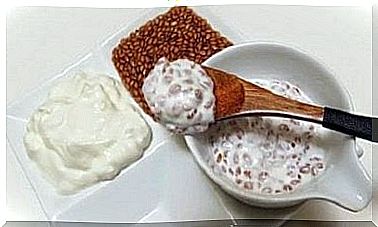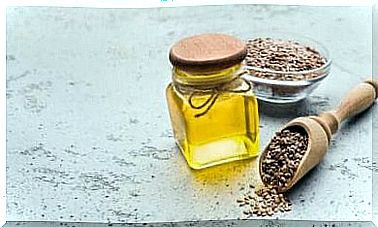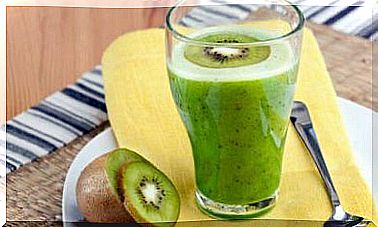Types Of Creatine: Properties And Applications

Creatine is one of the dietary supplements most commonly used by athletes worldwide. Do you want to know the types of creatine, its properties and recommended uses? Read on, we’ll explain everything to you!
Today, most people in the world exercise, whether as a hobby or professionally. Therefore, many products that improve performance during training have appeared on the market. One of the most popular is creatine. In this article, we will tell you what its types, properties and applications are.
Creatine is a non-protein amino acid found in the body. It is distributed in the muscles and, to a lesser extent, in the brain. Red meat and seafood are the main sources of this in the diet.
The main function of creatine is related to the formation of ATP (a substance of energy metabolism), hence it has such a positive effect on the development of athletes. However, it is also used to treat certain brain disorders and heart failure.
Types of creatine and their properties
As creatine works perfectly as a dietary supplement, various types of it have appeared on the market over the years . They differ slightly in their chemical composition, optimized for better results. And so, among the various creatine compounds, we can find the following:
Creatine Monohydrate
It is the creatine supplement most commonly used by athletes, and also the purest – other types come from it. It has been shown to be highly effective in improving various aspects of training such as speed and maximum performance.
This compound usually does not contain additives – so 88% is creatine and the remaining 12% is water. Thanks to this, it has the ability to moisturize cells, regenerate their damage and increase intramuscular reserves.

Creatine hydrochloride
As one of the newest types of creatine. There are several studies that deal with this type in detail. As they show, mixing creatine with hydrochloric acid creates a stable molecule and up to 38 times more soluble than creatine monohydrate.
As a result, creatine hydrochloride is more easily absorbed while generating the same effects. In addition, it is less likely to cause kidney damage.
Creatine Gluconate
This dietary supplement consists of creatine mixed with glucose molecules. As a result, its intestinal absorption is faster. In addition, it travels efficiently into the bloodstream and reaches the muscle more efficiently than creatine monohydrate, because glucose generates a temporary spike in insulin.
Creatine Phosphate or Creatine Phosphate
Phosphocreatine, or creatine phosphate, is a chemical compound found in the body that provides increased energy value. However, its reserve levels are low. That is why it is one of the most sought-after types of creatine. It consists of creatine and phosphate in a ratio of 62–38.
It has the same functions as creatine monohydrate, so it is the perfect supplement for building muscle tissue. In addition, as an additional source of energy, it reduces the level of fatigue during training.
Kre-alkalyn
Also known as alkaline creatine or buffered creatine, it is the result of a mixture of creatine monohydrate and alkalizing powders. The main idea behind the creation of this substance is to raise the pH of the compound to improve its absorption and prevent the formation of creatinine, reducing kidney damage.
Alkaline creatine has long been thought to provide better results than monohydrate. However, recent studies have shown that there are no significant differences.
Creatine malate
In this compound, 2 or 3 molecules of creatine are mixed with malic acid, which makes it more soluble and easily absorbed. In addition, it improves the resistance, performance and strength of an athlete without affecting blood pressure or fat levels.
Creatine ethyl ester
Creatine ethyl ester is nothing but creatine monohydrate esterified with methanol or ethanol. It is esterification that facilitates the passage of the compound through the membranes of muscle cells, so its absorption takes place at high speed, and a smaller dose is also required.
Creatine Citrate
This is the result of a mixture of creatine (40%) and citric acid, making it the most soluble compound of all. In addition, thanks to the presence of citric acid, it stimulates the production of muscle energy. It is easily soluble and does not cause stomach discomfort, although its price is higher.
The use and safety of consumption of types of creatine
Creatine is used in competitive athletes to improve their speed, endurance and strength. Its use is recommended in sports such as rowing, high jumping or football, where its effectiveness has been repeatedly demonstrated.
On the other hand, creatine supplementation is used to treat the rare syndromes of this amino acid deficiency, when the body is unable to generate it on its own. Despite insufficient scientific evidence, oral consumption is prescribed in cases of heart failure.
It is safe to consume different types of creatine as long as it is consumed in the short term and in maximum doses of up to 5 grams. However, it is important to consult your doctor before starting any dietary supplement.
Possible benefits of using creatine
Various types of creatine have become the allies of athletes. This is because they all offer the same benefits when you train. Here are the main ones:
- provide energy to muscle fibers,
- increase the volume and facilitate muscle regeneration,
- allow to reduce fatigue ,
- delay skin aging.
There are the greatest differences between creatine compounds when it comes to their solubility. The more soluble ones will be absorbed faster and the required dose will be lower.

Contraindications to the use of creatine
One of the first things to keep in mind when talking about creatine use is possible kidney damage. You should pay attention to this especially if you already have a kidney problem or are at high risk of developing it, especially because of excess protein.
On the other hand, you should also avoid taking creatine along with nephrotoxic drugs, that is, those that are capable of affecting kidney function. Consuming both substances at the same time can increase the risk of damage.
Other contraindications for creatine use are related to caffeine consumption. The substances should not be taken together, because then the effect of this amino acid on the muscles will be limited.
Types of creatine: the main differences
As you can see, the types of creatine are very similar. All of them have the same effect on the muscles. There is insufficient scientific evidence to claim that some compounds exhibit it more than others.
The difference between them is based on solubility and possible side effects. Overall, creatine monohydrate derivatives are more soluble and cause fewer stomach problems. However, you should always consult a specialist before taking any of the supplements described.









